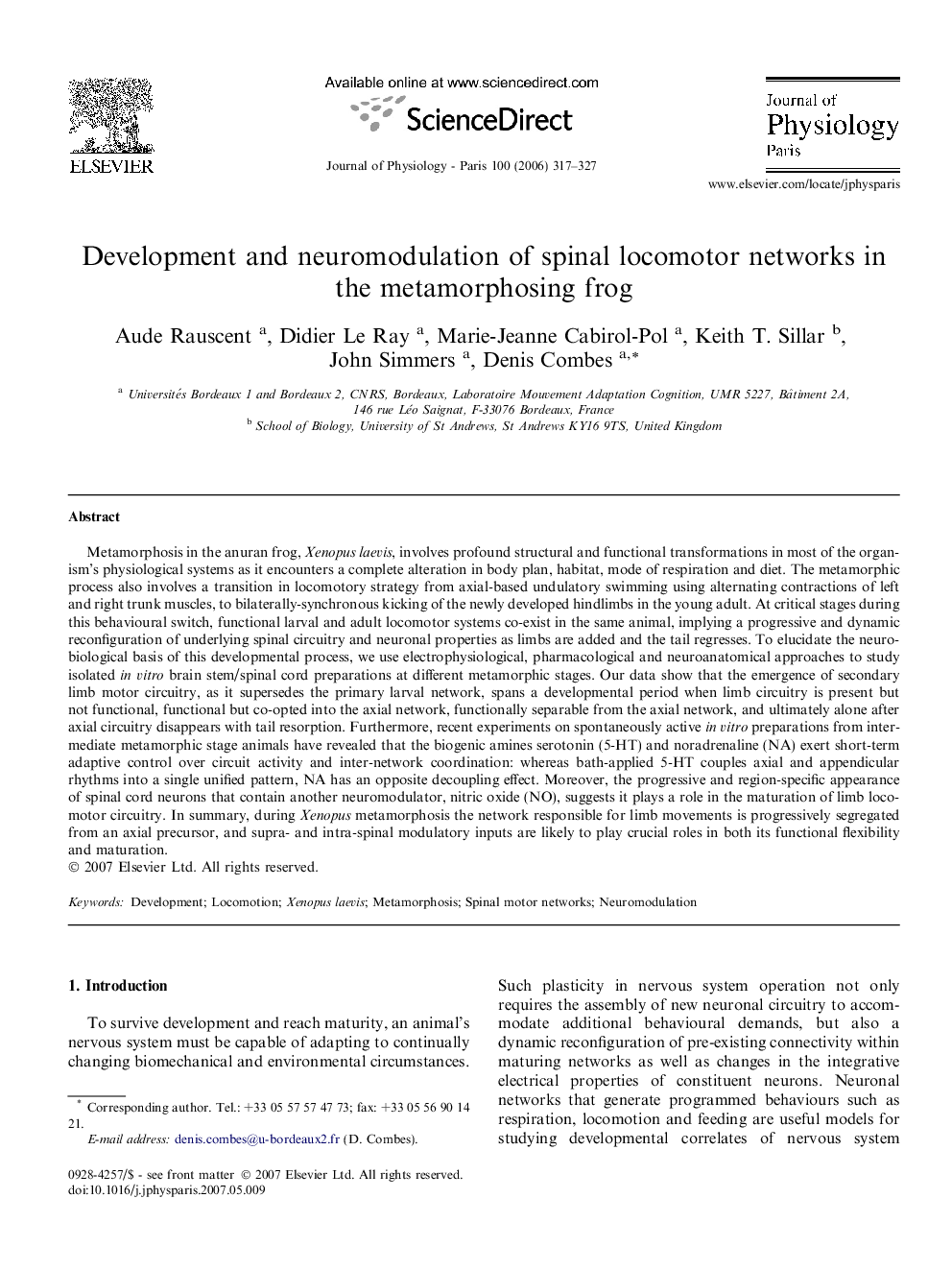| کد مقاله | کد نشریه | سال انتشار | مقاله انگلیسی | نسخه تمام متن |
|---|---|---|---|---|
| 2842394 | 1571039 | 2006 | 11 صفحه PDF | دانلود رایگان |

Metamorphosis in the anuran frog, Xenopus laevis, involves profound structural and functional transformations in most of the organism’s physiological systems as it encounters a complete alteration in body plan, habitat, mode of respiration and diet. The metamorphic process also involves a transition in locomotory strategy from axial-based undulatory swimming using alternating contractions of left and right trunk muscles, to bilaterally-synchronous kicking of the newly developed hindlimbs in the young adult. At critical stages during this behavioural switch, functional larval and adult locomotor systems co-exist in the same animal, implying a progressive and dynamic reconfiguration of underlying spinal circuitry and neuronal properties as limbs are added and the tail regresses. To elucidate the neurobiological basis of this developmental process, we use electrophysiological, pharmacological and neuroanatomical approaches to study isolated in vitro brain stem/spinal cord preparations at different metamorphic stages. Our data show that the emergence of secondary limb motor circuitry, as it supersedes the primary larval network, spans a developmental period when limb circuitry is present but not functional, functional but co-opted into the axial network, functionally separable from the axial network, and ultimately alone after axial circuitry disappears with tail resorption. Furthermore, recent experiments on spontaneously active in vitro preparations from intermediate metamorphic stage animals have revealed that the biogenic amines serotonin (5-HT) and noradrenaline (NA) exert short-term adaptive control over circuit activity and inter-network coordination: whereas bath-applied 5-HT couples axial and appendicular rhythms into a single unified pattern, NA has an opposite decoupling effect. Moreover, the progressive and region-specific appearance of spinal cord neurons that contain another neuromodulator, nitric oxide (NO), suggests it plays a role in the maturation of limb locomotor circuitry. In summary, during Xenopus metamorphosis the network responsible for limb movements is progressively segregated from an axial precursor, and supra- and intra-spinal modulatory inputs are likely to play crucial roles in both its functional flexibility and maturation.
Journal: Journal of Physiology-Paris - Volume 100, Issues 5–6, November–December 2006, Pages 317–327